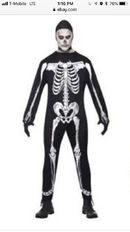Med Hypotheses. 2000 Apr;54(4):585-90.
Dysbaric osteonecrosis: a reassessment and hypothesis.
Hutter CD1.
Author information
Abstract
Dysbaric osteonecrosis is associated with exposure to large ambient pressure changes, and comprises necrotic lesions in the fatty marrow-containing shafts of the long bones, and the ball and socket joints (hips and shoulders). The fundamental causes are still in question and the illness remains a significant health hazard. Radiological and pathological features of both dysbaric and non-dysbaric osteonecrosis are indistinguishable and both are characterized by intramedullary venous stasis, ischemia and necrosis of bone.
It has been generally accepted that gas bubbles (probably by initiating intramedullary venous stasis) are the prime cause of dysbaric osteonecrosis, as well as being responsible for Type 1 Decompression Sickness or 'the bends'. Importantly, however, not all series have found a correlation between dysbaric osteonecrosis and 'the bends'. Thus even though it is likely that gas bubbles remain the prime cause of dysbaric osteonecrosis, workers have proposed that in some cases there is another etiological factor which may exaggerate the pathologic effects of gas bubbles, making the bone more susceptible to necrosis. It is proposed that rapid compression by impeding venous drainage from bone initiates intramedullary venous stasis. In the presence of intramedullary gas bubbles, this may progress to thrombosis, ischemia and bone necrosis. The review offers an explanation for total sparing of the knee joint in dysbaric osteonecrosis, and sole involvement of the hip and shoulder (in terms of sub-articular lesions and subsequent joint collapse). In addition to continued observance of proper decompression procedures, a slower rate of compression may further reduce the incidence of dysbaric osteonecrosis. Bone death or osteonecrosis is a concept which Hippocrates put forward in antiquity (1), but it was not until 1794 that James Russell of Edinburgh wrote the first modern-day descriptions. In these cases infection was the predominant etiology (1,2). In 1888 Konig described necrosis of the adult femoral head without infection (3) (aseptic necrosis of bone) and in the same year Twynam reported a case of osteonecrosis in a caisson worker (4) in which there was still a significant infective component. In 1911 Bornstein and Plate, followed later and independently by Bassoe in 1913, presented radiological confirmation of aseptic necrosis of bone in compressed air workers (5). The first report of aseptic necrosis in an underwater diver subsequently appeared in 1936 (6). The condition of aseptic necrosis of bone in association with exposure to raised ambient pressure (previously referred to as caisson disease, pressure-induced osteoarthropathy (7), 'bone rot' (8) and other synonyms (6)) is now generally known as dysbaric osteonecrosis (6). Despite detailed examination of this problem by many authorities, dysbaric osteonecrosis still remains a significant occupational hazard with serious medico-legal consequences (5-13). This suggests that preventative measures are being based upon an incomplete understanding of the pathophysiology of the disease, and that other etiological factors are perhaps being overlooked.
PMID:
10859644
DOI:
10.1054/mehy.1999.0901
[Indexed for MEDLINE]
Dysbaric osteonecrosis: a reassessment and hypothesis. - PubMed - NCBI





